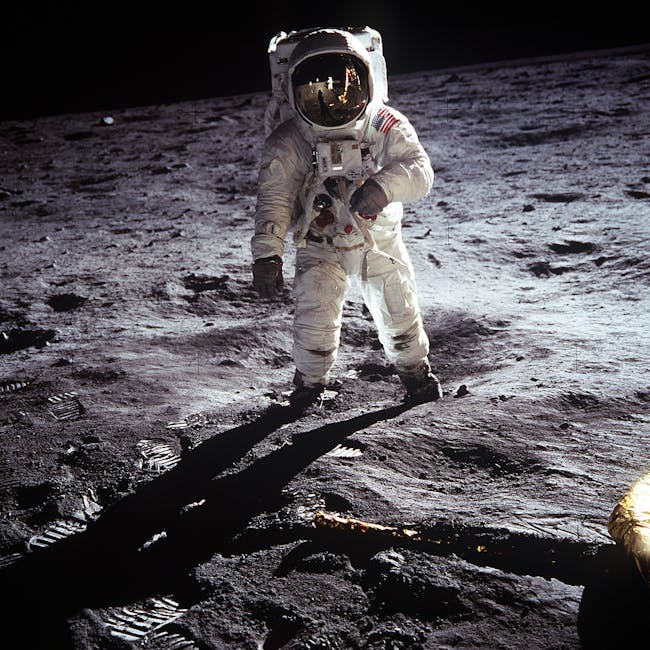Space exploration has always been a fascinating and ambitious endeavor for humanity. The United States, in particular, has been a major player in unveiling the mysteries of the cosmos. From the early days of space travel to the cutting-edge missions of today, American space exploration has marked some significant milestones.
The Dawn of the Space Age: Sputnik and the American Response
In 1957, the Soviet Union launched Sputnik 1, the first artificial satellite, which triggered a sense of urgency in the United States. This event marked the dawn of the space age and led to the creation of NASA (National Aeronautics and Space Administration) in 1958. The United States recognized that it needed to accelerate its efforts in space exploration. The launch of Explorer 1 in 1958 was America’s response, marking its first successful satellite, which provided valuable data about the Earth’s radiation belts. This was a critical moment that set the stage for future American space missions.
Project Mercury: First American in Space
Project Mercury was the United States’ first human spaceflight program, aiming to put a man in space. On May 5, 1961, Alan Shepard became the first American to travel into space aboard the Freedom 7 spacecraft. This mission was a pivotal achievement, as it demonstrated America’s ability to send humans into space and safely return them to Earth. The excitement and pride felt by Americans after Shepard’s mission were palpable, and it fueled further advancements in space exploration.
The Apollo 11 Moon Landing
One of the most iconic milestones in American space exploration is the Apollo 11 mission. On July 20, 1969, Neil Armstrong and Buzz Aldrin became the first humans to set foot on the Moon. Armstrong’s famous words, “That’s one small step for man, one giant leap for mankind,” echoed across the globe, symbolizing the triumph of human ingenuity. This achievement not only fulfilled President John F. Kennedy’s goal of landing a man on the Moon before the decade’s end but also established the United States as a leader in space exploration.
Skylab: America’s First Space Station
In 1973, NASA launched Skylab, the first American space station. Skylab served as a laboratory for scientific experiments and observations, providing valuable data about the effects of long-duration spaceflight on the human body. It housed three separate crews over its operational period, marking a significant milestone in living and working in space. Skylab’s success paved the way for future space stations, such as the International Space Station (ISS).
The Space Shuttle Era
The Space Shuttle program, initiated in the 1980s, revolutionized space travel by introducing reusable spacecraft. The first shuttle, Columbia, was launched on April 12, 1981, marking a new era of space exploration. The shuttle program enabled numerous scientific missions, satellite deployments, and construction of the ISS. Despite challenges and tragedies, such as the Challenger and Columbia disasters, the Space Shuttle program contributed significantly to advancements in space technology and international collaboration.
Voyager Probes: Journey to the Outer Planets
Launched in 1977, the Voyager 1 and Voyager 2 probes embarked on an incredible journey to explore the outer planets of our solar system. These probes have provided humanity with unprecedented images and data about Jupiter, Saturn, Uranus, and Neptune. Voyager 1, now the farthest human-made object from Earth, continues to send back valuable information about the interstellar medium. The Voyager mission is a testament to human curiosity and the quest for knowledge beyond our planet.
Hubble Space Telescope: Unveiling the Universe
The launch of the Hubble Space Telescope in 1990 marked a significant leap forward in our understanding of the universe. Orbiting above the Earth’s atmosphere, Hubble has provided stunning images and invaluable data about distant galaxies, stars, and planets. Its observations have reshaped our understanding of the cosmos, leading to groundbreaking discoveries such as the accelerating expansion of the universe. Hubble’s contributions to astronomy and cosmology continue to inspire scientists and the public alike.
International Space Station: A Global Collaboration
The International Space Station (ISS) represents a remarkable achievement in international collaboration and scientific research. Since its first module was launched in 1998, the ISS has served as a platform for experiments in microgravity, biology, and technology development. The United States’ involvement in the ISS has fostered partnerships with countries worldwide, promoting peaceful cooperation in space exploration. The ISS continues to be a hub of scientific discovery and innovation.
Curiosity Rover: Exploring Mars
The Curiosity Rover, part of NASA’s Mars Science Laboratory mission, landed on Mars in 2012. Its mission is to explore the Martian surface, analyze soil and rock samples, and search for signs of past life. Curiosity’s discoveries have provided valuable insights into Mars’ geology and climate, bringing us closer to understanding whether life ever existed on the Red Planet. The rover’s success has paved the way for future Mars missions, including the Perseverance Rover.
Artemis Program: Returning to the Moon
The Artemis program is NASA’s ambitious plan to return humans to the Moon by the mid-2020s. With the goal of establishing a sustainable human presence on the lunar surface, Artemis aims to pave the way for future missions to Mars and beyond. The program includes the development of new spacecraft, lunar landers, and exploration technologies. Artemis represents a new chapter in space exploration, with the potential to inspire a new generation of scientists and explorers.


